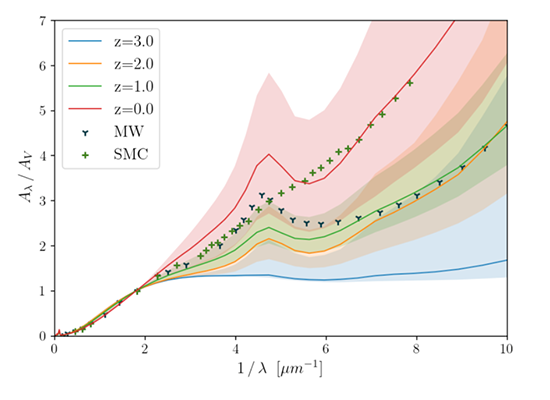Dust properties predicted in a cosmological simulation

We (Yu-Hsiu Huang, Hiroyuki Hirashita, et al.) modeled dust evolution in Milky Way-like galaxies by post-processing the IllustrisTNG cosmological hydrodynamical simulations in order to predict dust-to-gas ratios and grain size distributions.
We treat grain-size-dependent dust growth and destruction processes using a 64-bin discrete grain size evolution model. Our model broadly reproduces the observed dust–metallicity scaling relation in nearby galaxies. The grain size distribution is dominated by large grains at z=3 (where z is the redshift) and the small-grain abundance rapidly increases by shattering and accretion (dust growth) at z = 2. The grain size distribution approaches the so-called MRN distribution at z ∼ 1, but suppression of large-grain abundance occurs at z < 1. Based on the computed grain size distributions and grain compositions, we also calculate the evolution of the extinction curve (wavelength dependence of dust absorption and scattering of light) for each Milky Way analogue (shown in the above figure). Extinction curves are initially flat at z > 2, and become consistent with the Milky Way extinction curve at z < 1. Overall success in reproducing the Milky Way extinction curve indicates that our model includes key processes of dust evolution well.